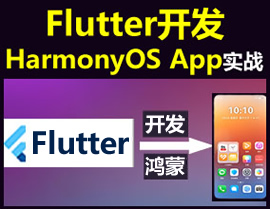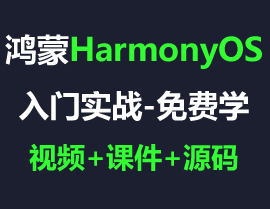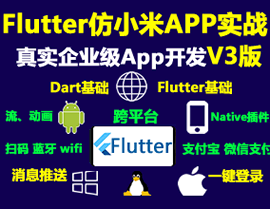Flutter自定义导航栏插件super_cupertino_navigation_bar_for_my_self的使用
Flutter 自定义导航栏插件 super_cupertino_navigation_bar_for_my_self 的使用
引言
本教程将展示如何使用 super_cupertino_navigation_bar_for_my_self 插件来自定义导航栏。这个插件基于 super_cupertino_navigation_bar 进行了修改,以满足特定的需求。
使用示例
示例代码
首先,我们需要导入必要的库并创建一个自定义的导航栏。以下是一个完整的示例,展示了如何在 Flutter 应用程序中使用该插件。
import 'package:flutter/cupertino.dart';
import 'package:flutter/material.dart';
import 'package:super_cupertino_navigation_bar_for_my_self/super_cupertino_navigation_bar.dart'; // 导入自定义导航栏插件
void main() {
runApp(const MyApp());
}
class MyApp extends StatelessWidget {
const MyApp({super.key});
@override
Widget build(BuildContext context) {
return MaterialApp(
theme: ThemeData.dark(
useMaterial3: false,
).copyWith(
brightness: Brightness.dark,
scaffoldBackgroundColor: const Color(0xff000000),
cardColor: const Color(0xff1B1B1B),
shadowColor: Colors.transparent,
iconTheme: const IconThemeData(color: CupertinoColors.systemBlue),
cardTheme: CardTheme(
shape: RoundedRectangleBorder(
borderRadius: BorderRadius.circular(15),
),
),
),
title: 'Flutter Demo',
home: const MyHomePage(title: 'Flutter Demo Home Page'),
debugShowCheckedModeBanner: false,
);
}
}
class MyHomePage extends StatefulWidget {
final String title;
MyHomePage({required this.title});
@override
_MyHomePageState createState() => _MyHomePageState();
}
class _MyHomePageState extends State<MyHomePage> {
@override
Widget build(BuildContext context) {
return Scaffold(
appBar: PreferredSize(
preferredSize: Size.fromHeight(80.0), // 设置导航栏的高度
child: SuperCupertinoNavigationBar(
middle: Text(widget.title), // 设置中间标题
trailing: IconButton(
icon: Icon(Icons.notifications_none),
onPressed: () {
// 处理通知按钮点击事件
},
),
backgroundColor: CupertinoColors.black, // 设置背景颜色
elevation: 0.0, // 去除阴影
),
),
body: Center(
child: Text('Hello, World!'),
),
);
}
}代码解释
-
导入库
import 'package:flutter/cupertino.dart'; import 'package:flutter/material.dart'; import 'package:super_cupertino_navigation_bar_for_my_self/super_cupertino_navigation_bar.dart'; -
创建主应用
void main() { runApp(const MyApp()); } class MyApp extends StatelessWidget { const MyApp({super.key}); @override Widget build(BuildContext context) { return MaterialApp( theme: ThemeData.dark( useMaterial3: false, ).copyWith( brightness: Brightness.dark, scaffoldBackgroundColor: const Color(0xff000000), cardColor: const Color(0xff1B1B1B), shadowColor: Colors.transparent, iconTheme: const IconThemeData(color: CupertinoColors.systemBlue), cardTheme: CardTheme( shape: RoundedRectangleBorder( borderRadius: BorderRadius.circular(15), ), ), ), title: 'Flutter Demo', home: const MyHomePage(title: 'Flutter Demo Home Page'), debugShowCheckedModeBanner: false, ); } } -
创建自定义页面
class MyHomePage extends StatefulWidget { final String title; MyHomePage({required this.title}); @override _MyHomePageState createState() => _MyHomePageState(); } class _MyHomePageState extends State<MyHomePage> { @override Widget build(BuildContext context) { return Scaffold( appBar: PreferredSize( preferredSize: Size.fromHeight(80.0), child: SuperCupertinoNavigationBar( middle: Text(widget.title), trailing: IconButton( icon: Icon(Icons.notifications_none), onPressed: () { // 处理通知按钮点击事件 }, ), backgroundColor: CupertinoColors.black, elevation: 0.0, ), ), body: Center( child: Text('Hello, World!'), ), ); } }
更多关于Flutter自定义导航栏插件super_cupertino_navigation_bar_for_my_self的使用的实战系列教程也可以访问 https://www.itying.com/category-92-b0.html
super_cupertino_navigation_bar_for_my_self 是一个自定义的 Flutter 导航栏插件,它模仿了 iOS 的 Cupertino 风格的导航栏,并且允许开发者根据自己的需求进行自定义。以下是如何使用这个插件的基本步骤:
1. 添加依赖
首先,你需要在 pubspec.yaml 文件中添加该插件的依赖:
dependencies:
flutter:
sdk: flutter
super_cupertino_navigation_bar_for_my_self: ^1.0.0 # 请使用最新版本然后运行 flutter pub get 来获取依赖。
2. 导入包
在需要使用该插件的 Dart 文件中,导入包:
import 'package:super_cupertino_navigation_bar_for_my_self/super_cupertino_navigation_bar_for_my_self.dart';3. 使用 SuperCupertinoNavigationBar
你可以在 Scaffold 的 appBar 属性中使用 SuperCupertinoNavigationBar 来创建一个自定义的导航栏。
import 'package:flutter/material.dart';
import 'package:super_cupertino_navigation_bar_for_my_self/super_cupertino_navigation_bar_for_my_self.dart';
void main() {
runApp(MyApp());
}
class MyApp extends StatelessWidget {
[@override](/user/override)
Widget build(BuildContext context) {
return MaterialApp(
home: Scaffold(
appBar: SuperCupertinoNavigationBar(
middle: Text('Home'),
leading: IconButton(
icon: Icon(Icons.arrow_back),
onPressed: () {
// 处理返回按钮点击事件
},
),
trailing: IconButton(
icon: Icon(Icons.settings),
onPressed: () {
// 处理设置按钮点击事件
},
),
),
body: Center(
child: Text('Hello, World!'),
),
),
);
}
}4. 自定义导航栏
SuperCupertinoNavigationBar 提供了多个属性来自定义导航栏的外观和行为。以下是一些常用的属性:
middle: 导航栏中间的部件,通常是一个Text或Icon。leading: 导航栏左侧的部件,通常是一个返回按钮。trailing: 导航栏右侧的部件,通常是一个设置按钮或菜单按钮。backgroundColor: 导航栏的背景颜色。border: 导航栏的边框,可以设置颜色、宽度等。padding: 导航栏的内边距。height: 导航栏的高度。
5. 更多功能
根据插件的具体实现,可能还支持更多的高级功能,如动态改变导航栏的标题、添加多个按钮、自定义动画等。你可以查阅插件的文档或源代码来了解更多细节。
6. 处理事件
你可以通过 onPressed 回调来处理导航栏按钮的点击事件。例如,点击返回按钮时,可以调用 Navigator.pop(context) 来返回上一个页面。
leading: IconButton(
icon: Icon(Icons.arrow_back),
onPressed: () {
Navigator.pop(context);
},
),7. 注意事项
- 确保你使用的是最新版本的插件,以便获得最新的功能和修复的 bug。
- 如果插件没有提供你需要的功能,你可以考虑自己扩展它,或者寻找其他类似的插件。
8. 示例代码
以下是一个完整的示例代码,展示了如何使用 SuperCupertinoNavigationBar:
import 'package:flutter/material.dart';
import 'package:super_cupertino_navigation_bar_for_my_self/super_cupertino_navigation_bar_for_my_self.dart';
void main() {
runApp(MyApp());
}
class MyApp extends StatelessWidget {
[@override](/user/override)
Widget build(BuildContext context) {
return MaterialApp(
home: HomeScreen(),
);
}
}
class HomeScreen extends StatelessWidget {
[@override](/user/override)
Widget build(BuildContext context) {
return Scaffold(
appBar: SuperCupertinoNavigationBar(
middle: Text('Home'),
leading: IconButton(
icon: Icon(Icons.arrow_back),
onPressed: () {
Navigator.pop(context);
},
),
trailing: IconButton(
icon: Icon(Icons.settings),
onPressed: () {
// 处理设置按钮点击事件
},
),
backgroundColor: Colors.blue,
border: Border(
bottom: BorderSide(
color: Colors.grey,
width: 1.0,
),
),
padding: EdgeInsets.symmetric(horizontal: 16.0),
height: 56.0,
),
body: Center(
child: Text('Hello, World!'),
),
);
}
}






